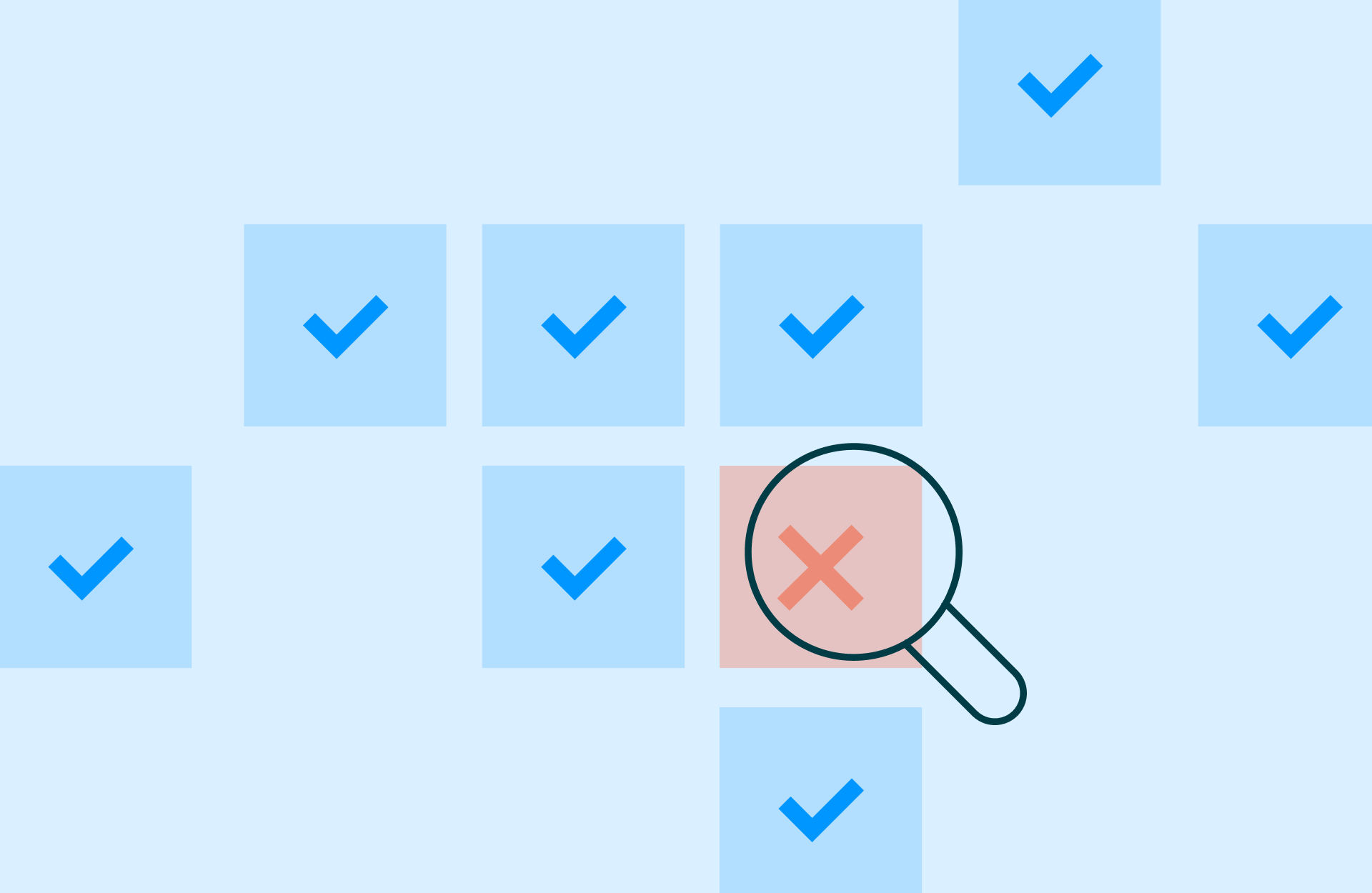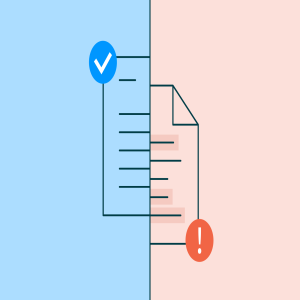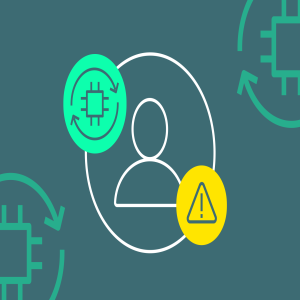In the ever-evolving landscape of education, the integration of technology has redefined the learning experience, offering innovative tools and resources to both students and instructors. However, with the rise of educational technology, it's crucial to navigate this landscape equipped with accurate insights and informed perspectives.
Educational technology serves as a dynamic force that—when used meaningfully and appropriately—can amplify efficiency, enhance collaboration, and deepen understanding. Yet, it's imperative that these tools are used complementary to instructor knowledge and student engagement, rather than as replacements for them.
Turnitin, then, can be a lens through which we can explore the intersection of data-driven insights and human judgment. Our software, when used in tandem with sound curriculum and best practices, can offer instructors and academic decision makers the information they need to make choices that safeguard their institution's reputation and the academic integrity of their programs.
In this blog, we will attempt to debunk prevalent myths and misconceptions surrounding Turnitin and its capabilities. We’ll also provide clarity around what our tools can be used for and the ways in which they support student learning outcomes. We hope that with this list, there can be a better understanding around how Turnitin can be optimized and used to genuinely cultivate an ethical, informed, and capable generation of learners.
What are the top misconceptions about Turnitin? 1. Myth: Turnitin detects plagiarism.Reality: Contrary to popular belief, Turnitin doesn't make judgment calls on plagiarism. It empowers instructors to assess the Similarity Report and determine potential issues, emphasizing the importance of a discerning human touch. As Patti West-Smith puts it: “Similarity does not equal plagiarism. The two concepts are not the same.”
Here are some things that Turnitin DOES achieve:
Turnitin opens up opportunities to learn about academic integrityWhile Turnitin is commonly associated with detecting plagiarism, it's important to understand its function accurately. Turnitin is an online tool used widely in educational institutions. Its purpose is not to definitively label content as “plagiarized” or not, but rather to assist educators in identifying potential instances of similarity in submitted work. This opens up opportunities for educators, researchers, students, and parents to dive deeper into understanding the role of academic integrity in learning and how it fosters academic development.
The Similarity Report provides learning opportunitiesWhen a student submits a document to Turnitin, the software generates a report known as the Similarity Report. This report highlights sections of the submitted work that match text found in our extensive database, which includes a wide range of academic and non-academic content, such as research papers, articles, websites, and previously submitted student papers. Rather than acting as an arbiter of academic misconduct, we encourage instructors to use the information provided by the Similarity Report to engage in conversations about proper citation and the importance of academic integrity. This approach supports a positive learning environment in which students understand how to credit sources appropriately.
Turnitin empowers educatorsTurnitin doesn't make the final judgment on whether plagiarism has occurred. Instead, it empowers instructors by providing them with a tool that highlights potential areas of concern. Educators can then review the Similarity Report to assess whether the matched content is appropriately cited, falls within acceptable limits, or requires further investigation.
2. Myth: If Turnitin says there is AI-written content, then there is definitely AI.Reality: Just like with any AI writing detection technology, there is a possibility of false positives, which means incorrectly identifying fully human-written text as AI-generated. Annie Chechitelli, Turnitin’s Chief Product Officer, acknowledges that “there is still a small risk of false positives” with our tools, but “[o]ur efforts have primarily been on ensuring a high accuracy rate accompanied by a less than 1% false positive rate, to ensure that students are not falsely accused of any misconduct.” Thus, it goes without saying that educators need to utilize the AI-detection information in our Similarity Report in parallel with essential conversations and make an informed decision based on their academic and institutional policies.
Reality: The Similarity Score mirrors matching content within the Turnitin databases, not necessarily indicating plagiarism. It's a launchpad for instructors and decision makers to delve deeper into text, check citations, and validate the originality. In fact, the metadata provided by Turnitin can foster Courageous Conversations with students on academic misconduct, transforming missteps into teachable moments. As Professor Cath Ellis of UNSW Sydney states, “It’s all about embracing the teachable moment. Even serious academic misconduct is a mistake from which students have a right to learn.”
4. Myth: The Similarity Score alone will suffice.Reality: Evaluating the context and substance of the writing is key. Instructors need to explore the entire Similarity Report—not just look at the Similarity Score—to make informed decisions about a paper's authenticity. In a previous blog, we looked at how instructors interact with Turnitin’s Similarity Report, outlining what it is and how to leverage its power to meet instructional goals.
5. Myth: Papers in the Turnitin database are not secure; student privacy can be compromised.Reality: Privacy prevails within Turnitin. All papers in our database are safeguarded from unauthorized access, and the student database remains off-limits to everyone. In this letter to Senators Durbin, Markey, and Blumenthal, Turnitin CEO Chris Caren shares more information about Turnitin’s data privacy practices.
6. Myth: The source named in the Similarity Report is the exact source used by the writer.Reality: Source matching is complex. The internet is filled with duplicate content across various platforms, websites, and databases. This can result from legitimate syndication, content sharing, or even unintentional replication due to the nature of online publishing. As a result, the same or very similar content can be found in multiple locations, leading to multiple matches in the Similarity Report.
The Similarity Report identifies matching text by comparing submitted work against its extensive database. However, this doesn't mean that the reported source is the direct or only source of the content. The writer might have accessed the same information from a different source or context altogether, but the matching content exists in Turnitin's database due to its widespread usage in various documents.
7. Myth: Once a paper has been submitted to Turnitin, it is in the database forever.Reality: Students can opt out, and institutions can choose storage options. Removal is possible under the instructor's request, emphasizing control over data. This means that the robust scholarly articles, internet and student paper data we do collect is done so with full permission and in alignment with global privacy standards (see #5 above and #8 below), ultimately offering the most comprehensive database to ensure authenticity. Want to learn more? Check out this blog, as well as our About page on our content library.
8. Myth: Turnitin is inflexible.Reality: Far from one-size-fits-all, Turnitin is a versatile tool with customizable settings. Instructors wield the power to tailor it to institutional, departmental, and individual preferences, fostering flexibility that aligns with diverse needs. Our tools offer a variety of valuable options (like item analysis) that can support effective assessment design and enhance student learning outcomes. Visit our Help Center to discover different settings or jump into a conversation with peers on our Turnitin Educator Network (TEN) on ways to optimize Turnitin.
Reality: The United States Court of Appeals for the Fourth Circuit unanimously affirmed that Turnitin's archiving of work was not a copyright infringement because it falls within the fair use exception. Please see our Privacy and Security page for more information.
9. Myth: All students hate Turnitin.Reality: Students have, in fact, stated that they like the fact that Turnitin helps maintain a level playing field, like in this blog. Turnitin protects students' work from unauthorized use and gives students who want to do their own work a valid reason not to share their work with others.
10. Myth: Outsmarting Turnitin is easyReality: Turnitin curbs manipulation with a 24-hour waiting period for resubmissions (if resubmissions have been enabled by their instructor). Rigorous protocols prevent word manipulation for better originality scores. Furthermore, in a previous blog, we looked at other, highly unusual ways students might try to “trick” Turnitin (swapping letters; macros in disguise) and how our technology consistently flags these nuances.
11. Myth: All words, big or small, could be mistaken for a match in a Similarity Report.Reality: The likelihood that a 16-word match is "just a coincidence" is less than 1 in a trillion. Turnitin also includes the ability to exclude "small sources" if the instructor wants to block similarity checking for common phrases.
12. Myth: Turnitin doesn’t detect paraphrased content or submissions that have used word spinners.Reality: Turnitin's algorithm detects paraphrased content and synonyms. This means that even if a student rephrases content from a source, it can still trigger a match if the underlying ideas or phrases are similar enough.
Many word spinners online tout their ability to thwart Turnitin with their paraphrasing technology, but in reality, our software can recognize this type of similarity. Accurate paraphrasing (when cited correctly) adds credibility to writing and enhances a student’ s understanding of a particular topic. Paraphrasing can become problematic when a student lacks the foundational skills to execute it effectively, so it may be helpful to utilize the resources in Turnitin’s Paraphrasing Pack to help students avoid resorting to shortcuts solutions like word spinners.
13. Turnitin has expertise in plagiarism and can render judgment on specific cases.Reality: There is no "threshold" similarity score that is either "good" or "bad." As mentioned above, each and every Similarity Report needs to be examined to understand whether a student has exhibited misconduct. Instead, the Similarity Report presents educators with opportunities for teachable moments. It encourages discussions about the importance of proper source evaluation, citation practices, and critical thinking. In the end, students need to learn how to attribute information accurately even in cases where direct matches are not detected.
14. Turnitin automatically grades papersReality: Turnitin addresses similarity and does not grade or mark papers. That important responsibility rests on instructors to evaluate assignments for academic integrity and their alignment with rubrics and/or an assignment’s state expectations. Check out this blog with tips on how to move beyond the percentage and towards evaluating the rich information in the Similarity Report.
15. Turnitin employs legions of writing experts to read and evaluate papers for plagiarism.Reality: While impressive, the truth is that Turnitin receives in excess of 1 million student papers daily and no human reads the papers at Turnitin. All papers are processed by our software, servers, and databases, which include 15 million new web resources daily and over 1 billion archived student papers.
What is the impact of a misconception on student learning?There are a variety of misconceptions about Turnitin’s tools and their use in education. Misconceptions, as we know, can shape the way individuals perceive and internalize information; even when presented with correction information, individuals may cling to flawed ideas, leading to misunderstandings that cascade into subsequent learning stages.
As Julia Hayden Galindo, Ed.D., Harvard Graduate School of Education, states: “As educators, it seems unlikely that we will be able to eliminate misconceptions entirely—the normal ways in which the brain functions supports them.” She goes on to say that “by combating students’ misconceptions” there is a chance that “instructors not only quell students’ particular misconceptions, they also teach students to take ownership of their learning.”
When students confront—and ideally correct—their misconceptions, they engage in a process of cognitive restructuring in order to strengthen their foundation of knowledge. When students are asked to think critically and maintain an openness to new perspectives, they then feel empowered to question, explore, and construct accurate mental models of the world around them.
In sum: Debunking the top misconceptions about TurnitinBy debunking these myths, we hope to illuminate Turnitin's role as an ally in fostering academic integrity and nurturing genuine learning. We hope that the supplemental information that we presented helps to clarify Turnitin’s true capabilities and underscore its partnership with educators and researchers.
In the end, it's a testament to the power of understanding that propels education forward, grounded in facts rather than misconceptions. By seeking the facts, we can embrace the strengths of technology while also preserving the essence of authentic learning and teaching experiences.






